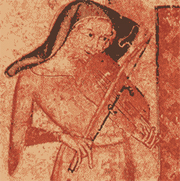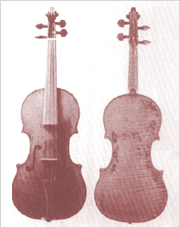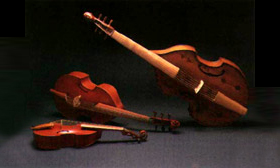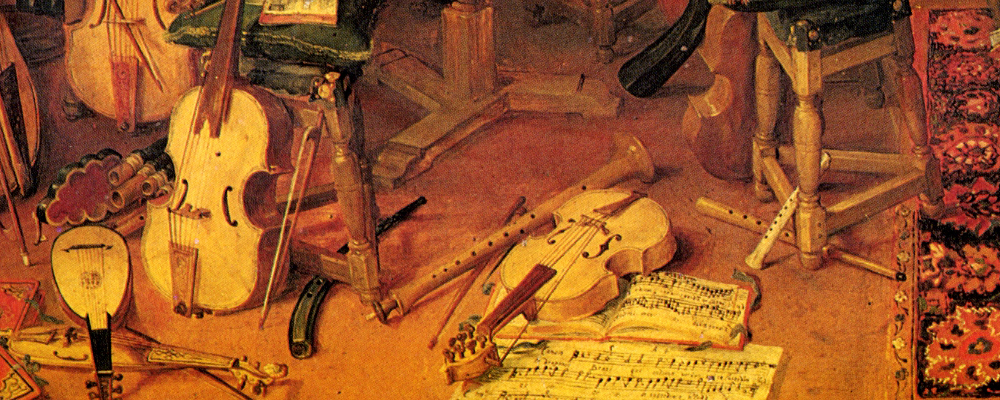The origins of the Violin
The birth of the violin
The eastern ancestors of the violin
Instruments like the violin that use a bow to produce a sound are called bowed stringed instruments. The Arabian rabab and the rebec, which came from the orient in the middle ages and was played widely in Spain and France in the fifteenth century, are said to be the ancestors of the violin. Near the end of the middle ages, a bowed stringed instrument called a fiddle appeared in Europe.
In the East, the Chinese erhu and morin khur evolved from the rabab, and so they are relatives of the violin.

A woman playing a fiddle
Who made the first violin?

The oldest existing violin, built by Andrea Amati.
Compared to its ancestors, the violin is in a class by itself in terms of completeness. In addition, it was not improved gradually over time, but appeared in its current form suddenly around 1550. Yet, none of these early violins exist today. This history of the violin is inferred from paintings from this era that feature violins.
The two earliest violin makers in recorded history are both from northern Italy: Andre Amati from Cremona and Gasparo di Bertolotti from Salon (Gasparo di Salon). With these two violin makers, the history of the violin emerges from the fog of legend to hard fact. Violins produced by these two still exist today. In fact, the oldest violin in existence today is one built by Andre Amati around 1565.
The viol, a relative of the violin?
Though the violin was introduced to the world in the middle of the sixteenth century, there was a similar looking instrument made in about the fourteenth century called the viol.The viol thrived in the sixteenth and seventeenth centuries, and the violin and the viol actually coexisted in the Baroque period.
Instruments in the viol family did not have the f-shaped sound hole of the violin but rather a C-shaped sound hole or even some more decorative shape. The viol differs from the violin in that it has six, seven, or more strings tuned in fourths (compared with the four strings of the violin tuned in fifths), a fretted fingerboard, and a relatively thick body because of the sloping shoulder shape at the joint where the neck meets the body. There are various sizes, but the Viola da Gamba, which has a lower register similar to that of the cello, was particularly famous.

The viol family
Musical Instrument Guide : Violin Contents
Origins
Structure
How to Play
How the Instrument is Made
Choosing an Instrument
Care and Maintenance
Trivia
- The f-hole used to be a C-hole or S-hole
- Why the f-hole?
- Violinists must bow to the horse
- Steel strings or gut strings? That is the question
- Is the chinrest the unsung hero of the violin?
- Most violin varnishes are also medicines
- Violin masterpieces: Solos I
- Violin masterpieces: Solos II
- Violin masterpieces: Solos III
- Violin masterpieces: Concertos I
- Violin masterpieces: Concertos II
- Viola masterpieces: Chamber music
- Viola masterpieces: Concertos
- Cello masterpieces: Concertos I
- Cello masterpieces: Concertos II
- Cello masterpieces: Solos
- Contrabass masterpieces: Concertos
- Contrabass masterpieces: Chamber music
- Orchestral masterpieces featuring the contrabass
- What do you call the part on the bow that you hold?

